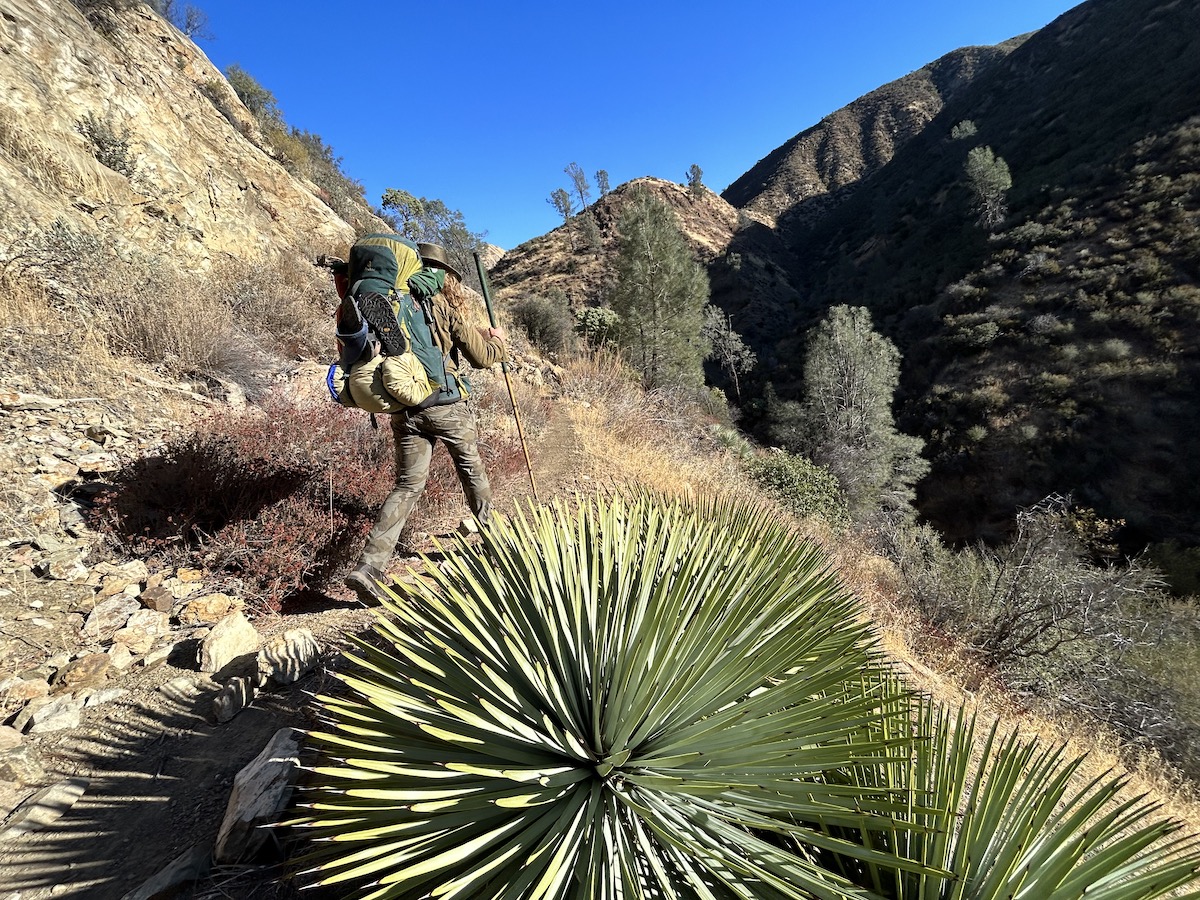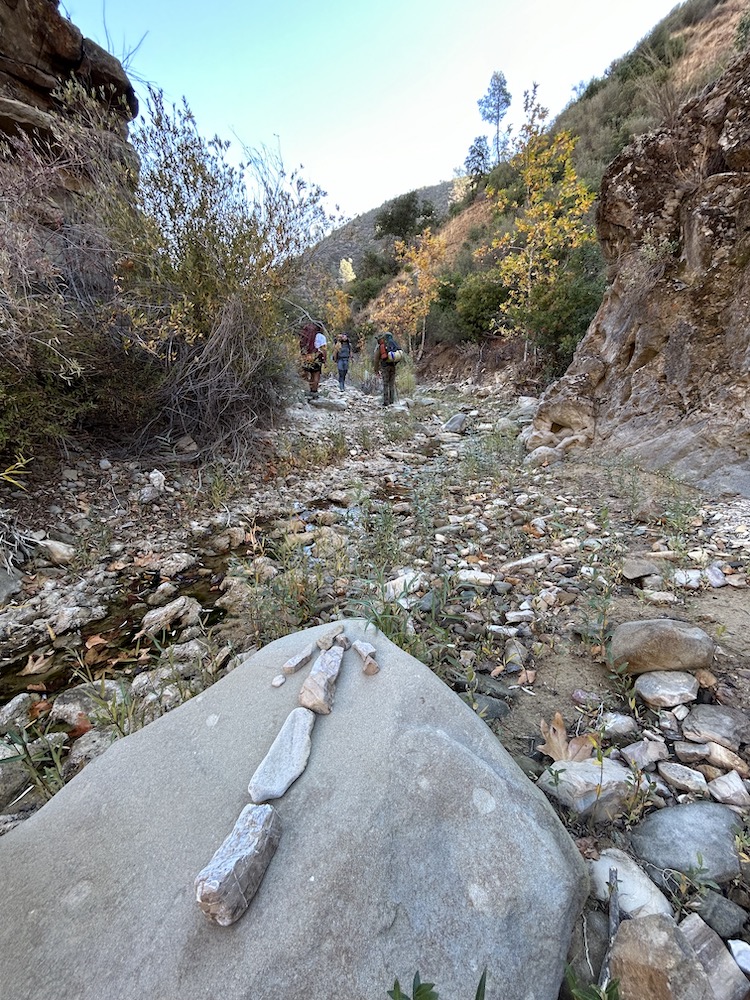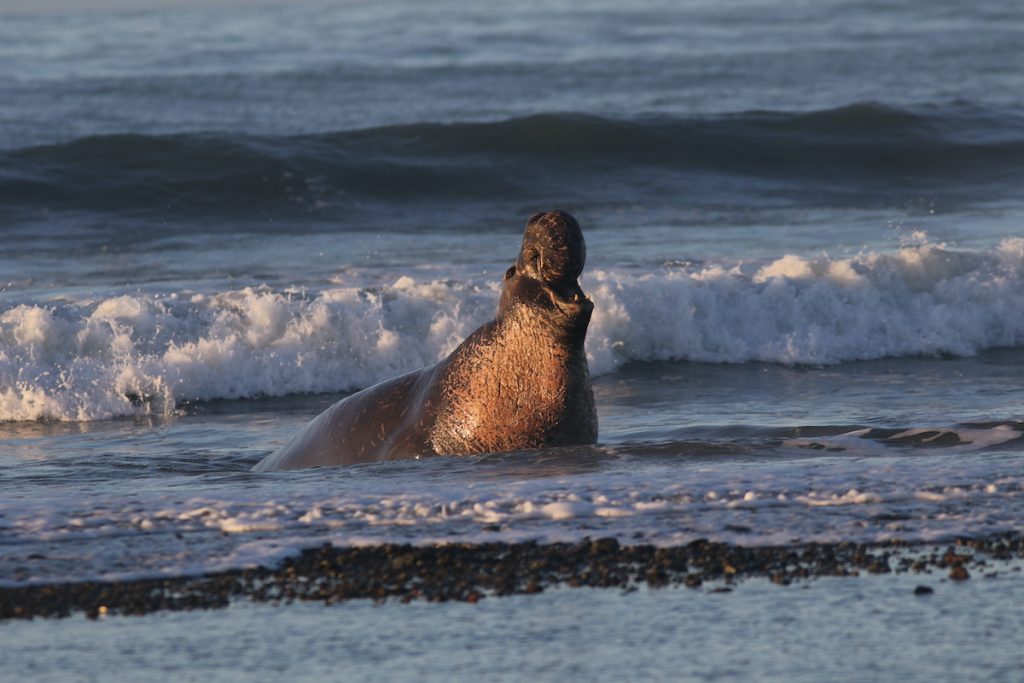Ticked Off

After bushwhacking and rambling across three mountain ranges and crossing two rivers between Nira Camp in the Los Padres National Forest and the Carrizo Plain National Monument, amazingly I didn’t find a single tick on me. It was December 2023, and fortunately, the same went for my five comrades as we spent seven days and 70 miles in the rugged Santa Barbara backcountry.
The chaparral-choked San Rafael, Sierra Madre and Caliente Mountains were overgrown in manzanita, yucca, oak woodland and poison oak, but not a single tick attached itself to any of us during the long haul throughout the remote San Rafael wilderness and Caliente Mountains. Still, every time we thrashed through what sometimes felt like seemingly impenetrable backcountry flora, we anticipated finding at least one of those menacing burrowers attached to each one of us or
our backpacks.

At the end of each overgrown route that required bushwhacking, we always did a tick check before rambling onto the next squiggly line on the map. It seemed like ticks would be a guarantee considering how overgrown national forest mainstays like Hurricane Deck and sections of the Sisquoc River were. And yet, we went tick-less. I couldn’t recall, but I think it was the first time I didn’t come home after a stint in the backcountry with at least one of those little devils clinging to me. However, it’s amazing where you can potentially cross paths with them. Sometimes it’s the place you would least expect.
I love getting ground level while photographing wildlife. I’d scoped out a possible spot to photograph northern elephant seals along the Central California coast. I found public access along Highway 1, and walked north for about two miles in the dark to a year-round creek that flows over a gravel bar and right into the ocean. The northern elephant seals, the second largest seal in the world, love this section of coast where they have the choice to haul out on the soft sand or just above on a grassy, windswept meadow. Some of the juveniles even enjoy wallowing in the deeper pools of the creek just before it converges with the ocean.
For me, it’s a great place to lay down, concealed amongst a flotsam of battered driftwood and tangled giant bladder kelp and hopefully capture some behavior of one of the most amazing mammals on the planet. I think it’s safe to say that when most people see northern elephant seals, they understandably view these marine mammals as perpetually lazy, but nothing could be further from the truth.
Elephant seals migrating back and forth from the Bering Strait in Alaska, spend about 80% of their route underwater, where they have the incredible physiology that allows them to dive 5,000 to 7,000 feet to the ocean floor. They are able to do this by shutting off a third of their brain to slow their heartbeat down to three beats per minute. These deep divers can spend up to 90 minutes underwater where they feed in the dark depths for sea cucumbers, squid, and other bottom dwellers.

By the time elephant seals reach their breeding and pupping grounds at places like San Miguel and Santa Rosa islands, and on north coast beaches like Año Nuevo State Beach, they’re pooped. It’s been a massive pelagic sojourn for these ginormous pinnipeds where the bulls reach 3,000 to 5,000 pounds. Once they’ve reached their “cushy” winter pitstops, there’s a lot of lying around, but there’s also a lot of mating, fighting amongst the bulls, and females birthing and nursing their adorable pups known as “weaners.”
At ground level, I photographed the behemoths from the southside of the gurgling creek. My favorite look was of a big bull exiting the ocean, four-to-six-foot, windblown surf not even budging the girthy male as it plowed toward the shoreline. However, there was a more dominant bull snoozing on the beach surrounded by his harem, gnarled kelp, and piles of driftwood. Somehow, that seemingly sleepy dominant bull knew the interloper was approaching and saw the need to reestablish his dominance. Like a giant inchworm, the biggest of the bulls left his harem and charged toward the shoreline, his massive body warbling toward the surf and the other bull. As soon as the dominant bull beelined it to the frothy surf, the other bull – treading water – ducked under a couple of foamy waves and vanished. The potential threat was a non-issue for the beachmaster of the central coast.
After the quick nonconfrontation between adversaries, I rose from the prone position and made my way back to Highway 1. I took a shortcut bushwhacking up a seasonal gully that fed the creek. For about five minutes I thrashed through thistle and coyote bush before reaching the grassy marine terrace. When I did, I felt something digging into my right hip, and discovered from the waist down a legion of ticks. Whether it’s the backcountry or the scenic central coast, those tenacious ticks always lurk.







